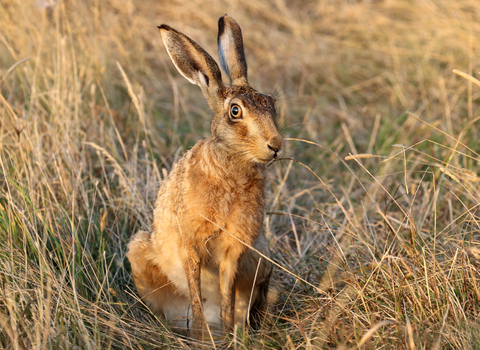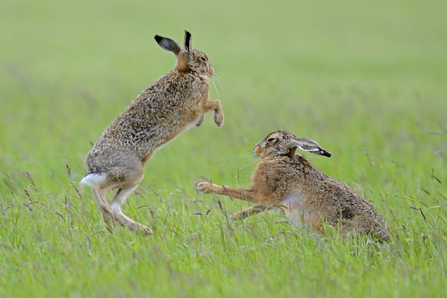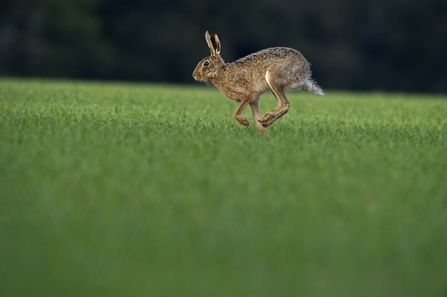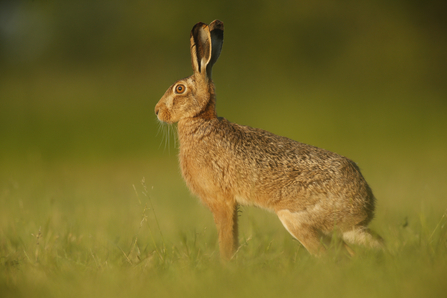
©Jim Higham
Mad as a March hare?
Where did this saying come from? And what strange activity can you spot hares doing in spring?
Have you ever heard the saying ‘Mad as a March hare’? Well people have been saying it for HUNDREDS of years. It’s all because of the odd behaviour that hares show in the spring, especially in March. So, what exactly is it?
Why do hares box?
March is right in the middle of the hares’ breeding season. This means that male hares are looking for female hares to mate with. The males chase females but sometimes the females don’t want the attention. That’s when the boxing match begins! When the female has had enough of being chased, she turns around and wallops the male to discourage him. Take that! It looks like they’re boxing because the female and male are on their back legs, hitting each other with their front paws. They even pull out fur!

Andy Rouse/2020VISION
Move aside, Usain Bolt
It’s not just boxing that hares are great at. They’re also amazing sprinters! They can reach 40 miles per hour when they run at full pelt. Incredible!

©David Tipling/2020VISION
How are hares different from rabbits?
You probably know more about rabbits than you do hares. Maybe you or someone you know even have pet rabbits. Although they might look similar, there’s actually lots of ways that they’re different.
- Hares have much longer back legs – so they move a lot faster!
- Different types of rabbits have different sized ears, but hares have very long ears. Hares have black tips on their ears, too.
- Hares live above the ground, whereas rabbits live underground in groups.
Elizabeth Dack
Rabbit

Jamie Hall
Brown hare
Did you know?
Hares aren’t doing very well across the UK anymore. Sadly, they have declined by more than 80% in the past 100 years. Intensive farming, like using lots of pesticides and cutting down hedgerows, has meant that hares don’t have as many safe places to live. Wildlife Trusts are helping hares by working with farmers to make sure their farms are managed in the best ways for wildlife!
